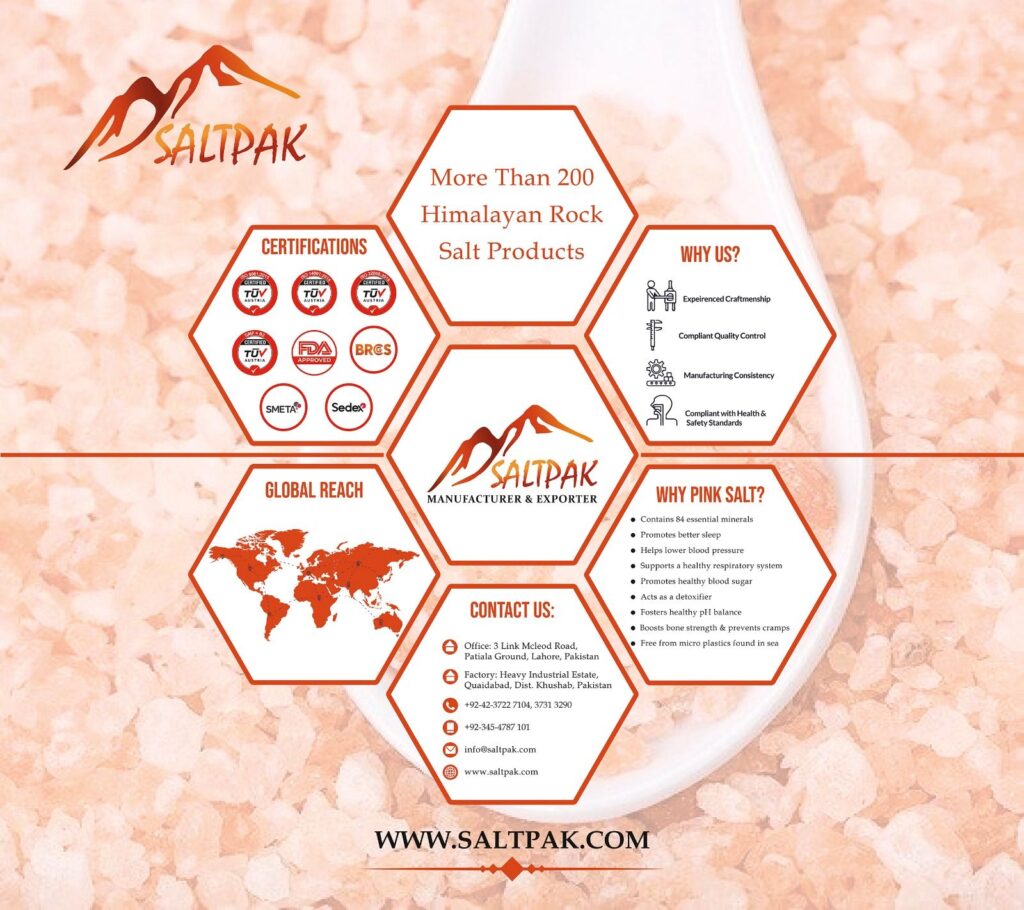Himalayan salt, that is a natural salt known for many health benefits. Although there is a complete story of sustainability and environmental stewardship along with it that we are going to discuss here. Basically, we are going to discuss how it is responsibly extracted, processed, and brought to market.
Introduction to Himalayan Salt:
In this article, we are going to discuss Himalayan salt and its sustainable mining practices in detail. To start with Himalayan salt, this salt is also known as pink salt. This salt is mined from ancient sea beds located deep within the Himalayan mountains. These deposits were formed over 250 million years ago and are renowned for their purity and mineral richness as they contain trace minerals like iron, magnesium, and potassium. This salt has its unique pink color as well.
The Importance of Sustainable Mining:
Now let’s discuss sustainable mining. To let you guys know, sustainable mining practices are extremely important if you want to preserve the natural environment and want to ensure the longevity of the salt reserves. Although there are many conventional mining methods available, they can lead to significant environmental degradation. On the other hand, sustainable practices aim to minimize ecological disruption and promote the well-being of local communities.
Ethical and Sustainable Mining Techniques
Here are some ethical and sustainable mining techniques that have multiple benefits given with them.
a. Traditional Mining Methods:
Traditional mining methods involve manual labor. In this method, miners use simple tools to extract salt from the earth. This method does not involve any kind of heavy machinery in it. So, this is not only labor-intensive but also environmentally friendly, as it also minimizes carbon emissions.
b. Controlled Blasting:
In order to make these methods environmentally friendly, we use traditional mining methods but, in some areas, manual extraction is not feasible, so another method called “controlled blasting” is used. This technique involves small, precise explosions to break the salt into manageable pieces. This also reduces the impact on the surrounding environment.
c. Hand-Crushing and Sorting:
After extraction, the salt is hand-crushed and sorted to ensure only the highest quality crystals are selected. This process helps to maintain the purity and integrity of the salt.
Environmental Stewardship
Now, the question arises that how do these sustainable mining methods help to maintain the environment? Well, here is the answer:
a. Minimal Waste Generation:
Sustainable mining operations focus on minimizing waste by using nearly every part of the mined salt. Smaller fragments and dust are repurposed for various applications, such as industrial uses and salt licks for animals.
b. Water Conservation:
Water is a precious resource in the Himalayan region. Sustainable mining practices emphasize the conservation and careful management of water used during the extraction and processing of salt.
c. Land Rehabilitation:
Post-mining land rehabilitation is a critical aspect of sustainable mining. Efforts are made to restore the mined areas to their natural state, including replanting vegetation and ensuring the stability of the land.
Social Responsibility and Community Engagement
Sustainable mining practices extend beyond environmental concerns to include social responsibility. Mining companies often engage with local communities to provide fair wages, safe working conditions, and opportunities for economic development.
a. Fair Trade Practices:
Adopting fair trade practices ensures that miners receive fair compensation for their labor, helping to uplift local economies and improve the standard of living.
b. Education and Training:
Investing in education and training programs for miners and their families fosters long-term community development and empowerment.
c. Health and Safety:
Implementing stringent health and safety protocols protects the well-being of miners, reducing the risk of accidents and occupational hazards.
The Path to Market
After extraction and processing, Himalayan salt undergoes rigorous quality control measures to ensure it meets international standards. The salt is then packaged and shipped to markets worldwide, where it is used in various applications, from culinary seasoning to wellness products.
Consumer Awareness and Ethical Choices
As consumers become more conscious of their environmental footprint, the demand for sustainably sourced products is on the rise. By choosing Himalayan salt products that adhere to sustainable mining practices, consumers can contribute to environmental preservation and support ethical businesses.

a. Certifications and Labels:
Look for certifications and labels that indicate sustainable and ethical sourcing, such as Fair Trade and organic certifications.
b. Brand Transparency:
Support brands that are transparent about their sourcing and production methods, providing detailed information about their sustainability initiatives.
